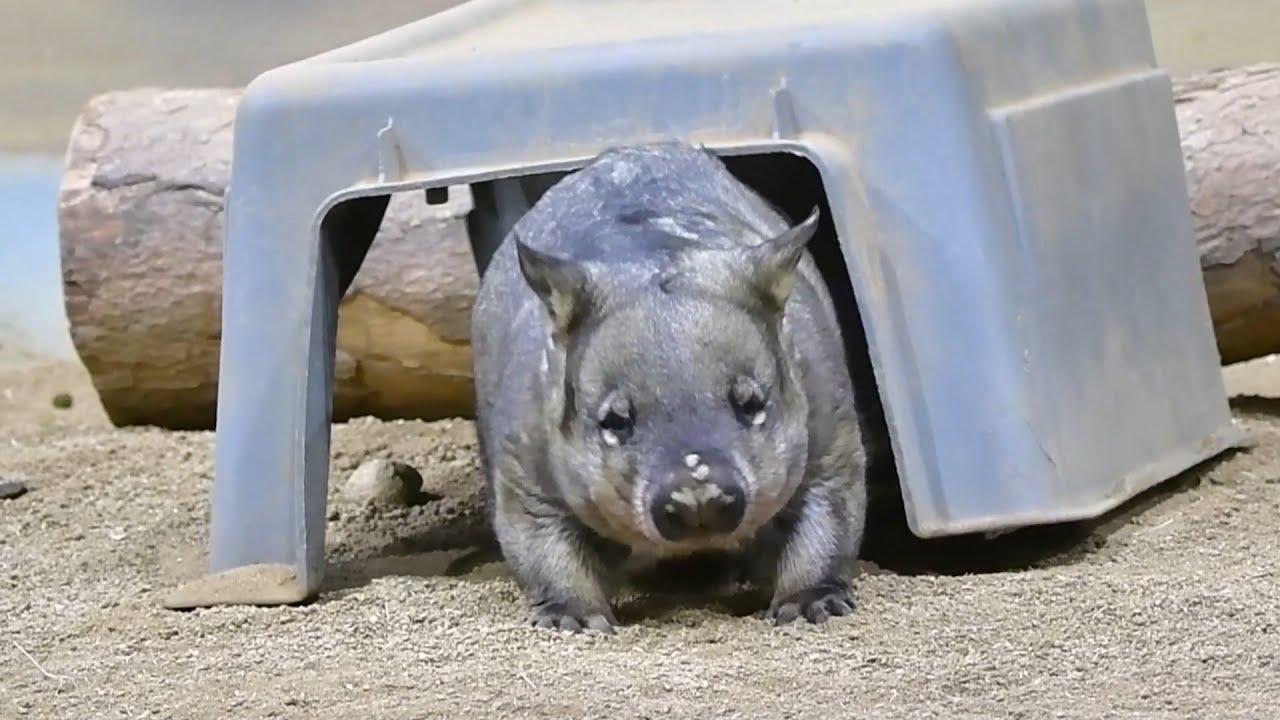– Understanding the unique behaviors of the Murray Wombat, including its distinctive itching habits
– Exploring the biological and ecological characteristics that make wombats fascinating creatures
– How the end-of-week exhilaration that we feel is mirrored in the animal kingdom
Hey there, nature enthusiast! Have you ever been so eager for the weekend that you twitched with anticipation, much like an animal with an itch that can’t scratch? You’re not alone in this feeling – literally and metaphorically. While we eagerly await that Friday feeling, a certain furry marsupial might just be doing the same: the Murray Wombat.
Now, if you’ve wandered through the dense bushlands and forests along the Murray River in Australia, you might’ve been lucky enough to spot one of these burly critters. But what about these wombats has us all scratching our heads with fascination? Let’s dig deeper – no pun intended, considering these guys are master excavators.
The Murray Wombat, often known as the common wombat, is a walking paradox. Its cuddly appearance belies a robust and weather-hardened creature, built like a four-legged tank, finely adapted for life in some of Australia’s more challenging terrains. It’s more than just a cute face; it’s a survivor, a digger, a nocturnal navigator of the underbrush.
These sturdy marsupials possess a unique quality that has piqued the interest of scientists and nature lovers alike. Have you ever seen a wombat scratch? It’s not just a random act – there’s a method to this madness! It turns out that wombats use objects in their environment to help satisfy those hard-to-reach itches. From rubbing their backs against rough tree bark to using their claws for a delightful scratch, these creatures know the meaning of relief!
But wait, the wombat doesn’t stop at simply scratching itches. These powerful diggers create complex burrow systems that have fascinated and puzzled researchers for years. The layouts of their underground homes can range from simple to maze-like complexity, demonstrating their intelligence and adaptation skills.
The common wombat’s role in its ecosystem is equally fascinating. By burrowing, they aerate the soil, which helps to promote plant growth and water absorption – essentially, they’re unwitting gardeners of their habitats. They also serve as a food source for predators and play a key role in the food chain, keeping the ecosystem balanced.
When the weekend finally arrives, and we embrace our leisure time with open arms, it’s vital to remember that the world of wombats never really pauses. Their lives continue in a sequence of grazing, digging, and, you guessed it, scratching. In a way, their simplicity is something to admire, a reminder to enjoy the small delights in life.
Now, let me nudge your curiosity a bit more. Have you considered the structure of a wombat’s body and its burrowing habits? Their short, strong legs are perfectly designed for digging, and their barrel-shaped bodies help them maneuver through tight underground tunnels. Wombats are also renowned for their tough backsides, used defensively against predators and, interestingly, against the unforgiving ground as they bulldoze through earthworks.
If you think the life of a wombat is all about the solo grind, think again. While they are often seen as solitary, evidence suggests they have a social side, too. Wombats can communicate with each other through a variety of vocalizations, and they mark their territories with scent. These olfactory signatures tell a story we’re only just beginning to understand.
How about we shift gears a little? Imagine the excitement you feel as you clock out on a Friday afternoon, the freedom of a weekend before you. While there’s no TGIF in the animal kingdom, there’s still a parallel. The way the Murray Wombat emerges at dusk to forage, there’s an air of release, a transition from the tranquility of day-burrow life to the lively nocturnal wander.
Here’s something else that deserves our attention. Wombats, like many marsupials, have a backward-facing pouch. This might seem like a curious design, but it’s purposeful. As a mother digs, this anatomical feature ensures the pouch remains free of dirt and debris, keeping her young, secure, and clean.
While wombats are relatively sturdy animals, they’re not immune to urbanization and habitat loss challenges. This is a stark reminder that our yearning for expansion can greatly affect the delicate balance of nature.
The Murray Wombat is truly remarkable, not just for its unique itching behaviors or impressive digging capabilities but for what it symbolizes. A creature of its beat, it embodies resilience, adaptation, and a quieter intelligence that often goes unnoticed. In a world where we’re constantly chasing the next big thing, the wombat reminds us that there’s beauty in the mundane: an itch scratched, a tunnel dug, a new leaf eaten.
While we may not be scratching our backs on a tree or snuggling in a burrow, we can learn much from these marsupials. They exemplify the joy in simplicity and the importance of caring for our metaphorical itches – whether those be ambitions, desires, or the simple need to unwind.
As the weekend rolls around, consider the Murray Wombat. Take a moment to be grateful for the natural world around us, the creatures that thrive in it, and the small satisfactions in life. We might be gearing up to relax, socialize, and explore, but let’s also remember to respect and protect the habitats of those like the wombat who share this incredible planet with us.
So, whether you’re a self-proclaimed weekend warrior or someone who enjoys the serene comfort of home, think about how you can channel your inner wombat. Embrace your natural environment, take pleasure in the little things, and never underestimate the joy of a good itch, well-scratched. #Wombat #Marsupial
*****
Source Description
Who else is itching to get the weekend started?
#Wombat #Marsupial


